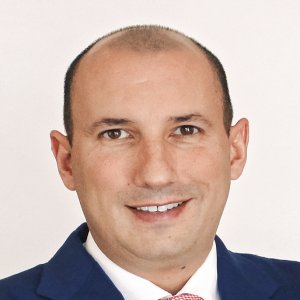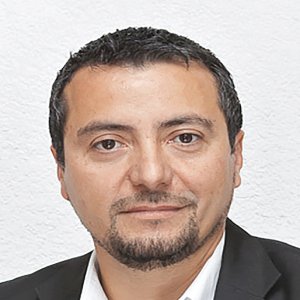Strength in Numbers

STORY INLINE POST
Q: What primary trends have you identified as drivers of growth in the aerospace sector?
A: The backlogs registered by the world’s largest aerospace OEMs show the industry’s global motor is the market. For example, Airbus and Boeing have an eight to 10-year backlog on airplanes, which is indicative of an excess demand for aircraft. The air transport sector is projected by some authorities to grow 5 percent annually over the next 20 years, thus increasing pressure on airlines and aircraft manufacturers. Mexican aerospace sector exports grew over 400 percent from 2004 to 2015, driven by commercial and civil aviation.
Despite having very few operations in the country, the defense sector could represent an interesting business opportunity in the future. Worldwide trends show the defense segment represents roughly half of the aerospace industry. In Mexico, we have not yet tackled this sector strongly, as we are still in the process of developing the necessary expertise and certifications, which are slightly stricter than those for commercial aviation.
Q: What are the sector’s main strengths?
A: Even though there have been aerospace companies in Mexico for the past 40 years (such as Curtiss-Wright in Baja California and Westinghouse in Chihuahua), the sector is relatively young. From the end of the ‘90s into the beginning of this century the local aerospace industry experienced growth led by the introduction of several OEMs into the country, such as Bombardier, Cessna, Beechcraft and Airbus Helicopters, as well as several Tier 1s.
In Mexico, 80 percent of operations are in the manufacturing sector, 11 percent are MROs and the remaining 9 percent are in engineering and design areas. Many foreign companies seem to be under the impression that Mexico is only focused on low-cost manufacturing given the fact that costs here are more competitive than elsewhere but this is not the case. The country has managed to turn this stereotype around. For example, when Safran came to Mexico it did not want to open a center with more than 50 people because the company did not believe the country had the expertise for a larger operation. The center now has close to 500 engineers focused on design. GE also shows that Mexico is competitive with 1,800 engineers in Queretaro.
Today, about 10 percent of the aerospace companies operating in Mexico have a local design and engineering division. While some firms operate with foreign design teams, many have design operations in Mexico. For example, Dreamliner’s complete energy transmission system was designed in Chihuahua, as was 60 percent of Safran’s power system, which was then incorporated into the Airbus A380. Some companies are more concerned with interior design, many of which are based in the state of Baja California.
Q: How does FEMIA represent the aerospace industry and directly benefit companies?
A: FEMIA was founded in 2007 by a group of aerospace companies to provide representation for all companies in the sector. FEMIA incorporates most of the main companies from the 300 entities that form Mexico’s aerospace industry and in fact, in 2015, 80 percent of the US$7 billion obtained in exports was from our members.
The federation supports the Mexican aerospace industry and bases its operations on three pillars. The first is competitiveness, which relies on the development of the supply chain, as well as supporting certification processes and providing workshops on compliance. This support is of the utmost importance because we had noticed that some small and midsized companies were unaware of the proper practices regarding this subject so we are working to help them improve. The second pillar is human capital. We collect information regarding the needs of our members and work together with universities and government agencies at the state and federal level so they can train quality human capital in a timely manner. The third pillar is to promote the sector, which is done both locally and internationally. FEMIA gives its members the opportunity to enter this supply chain network, which will facilitate their operations in the country. One of our main goals is to help local and foreign companies interested in entering the Mexican market to join forces and strengthen the supply chain with the least possible risk.
Q: What should be the top priority for the aerospace industry here?
A: The consolidation of the supply chain is a priority. At this point, Mexican companies need to focus on increasing their presence and incorporation into the sector, not just at a local level but also in the US and Canada. It is common for companies to only want to enter the local supply chain but a large percentage of the sector is based north of the border. With the necessary certifications, technology and expertise, those companies could enter supply chains in other countries. Our main goal is to help the industry grow through the consolidation of its supply chain.
The second challenge we face is ensuring we have the appropriate human capital on hand. For the Mexican aerospace sector to grow it is imperative that companies leading its growth can hire qualified employees as soon as they open facilities.
Q: What were the reasons behind FEMIA’s creation of ProAéreo alongside the government and how will it benefit the sector?
A: When ProAéreo was created the sector needed to have a growth plan for the next 10 years. This plan generated several strategies and objectives that established our road plan for these past few years and will determine those to come. We are well within ProAéreo’s timeframe as most objectives have been completed on time. For example, one of the goals of ProAéreo 2012-2020 was to provide jobs to 120,000 individuals and we closed 2015 with 54,000 employees. ProAéreo also plans to reach US$12 billion in exports and in 2015 we achieved US$7 billion. These are clear signs the sector is moving forward according to ProAéreo’s plan.
Still, the sector is developing its infrastructure. While it already possesses “hard” infrastructure such as equipment and technology, we are working on developing more “soft” infrastructure for mid and longterm opportunities, namely the impending need for more human capital. It takes four and a half years to train an engineer so we need to plan in advance for human resources. In my opinion, authorities and companies are taking the necessary steps to achieve ProAéreo’s goal to reach US$12 billion in exports and we are on target to employ 120,000 individuals by 2020.
Q: What are FEMIA’s goals for 2016 and how does the federation plan to achieve them?
A: Our strategy for 2016 is to continue on our current path. One of our goals is to increase and consolidate our membership, another is to keep pushing the sector forward in line with ProAéreo’s objectives and finally, even though we are only halfway through this plan’s timeline, a revision to create ProAéreo 2.0 would not be amiss. It may soon be necessary to analyze and re-evaluate our achievements to date and set new objectives for the next 10-20 years.























